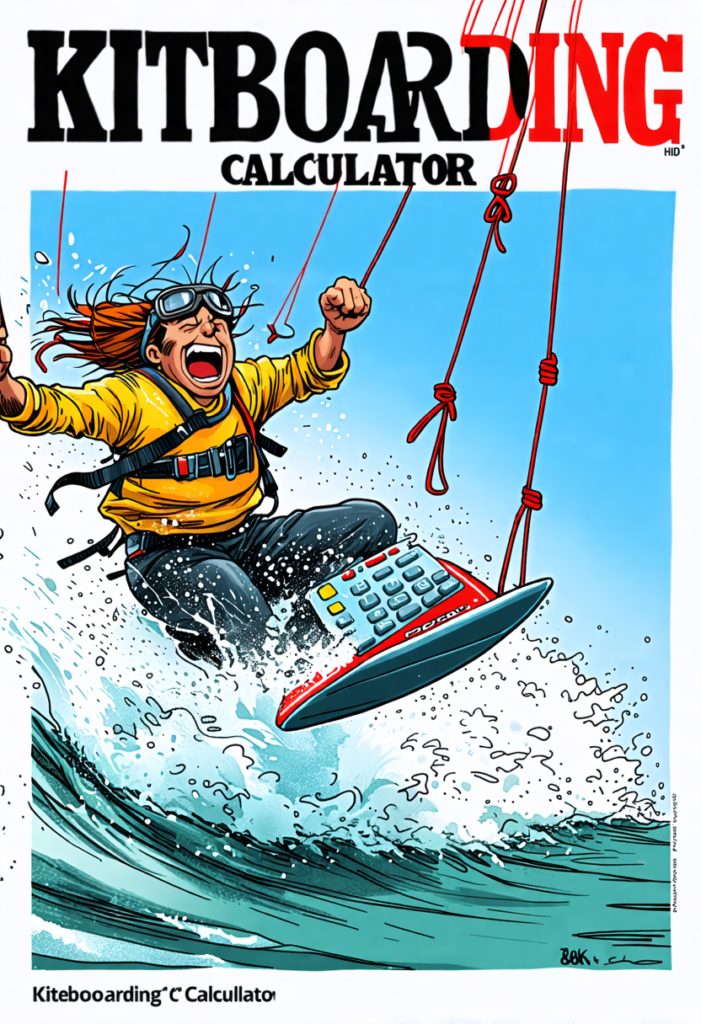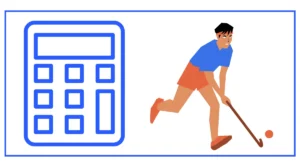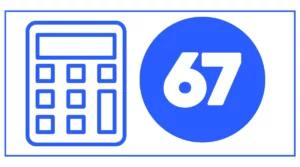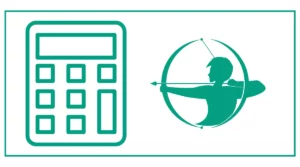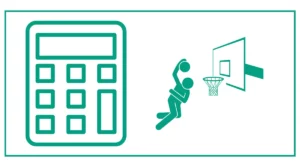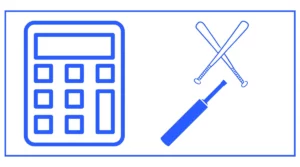Kiteboarding Calculator
The kiteboarding calculator helps you find the kite and board sizes according to your weight and wind speed.
Simply choose the kite type, your weight, and wind speed to find out.
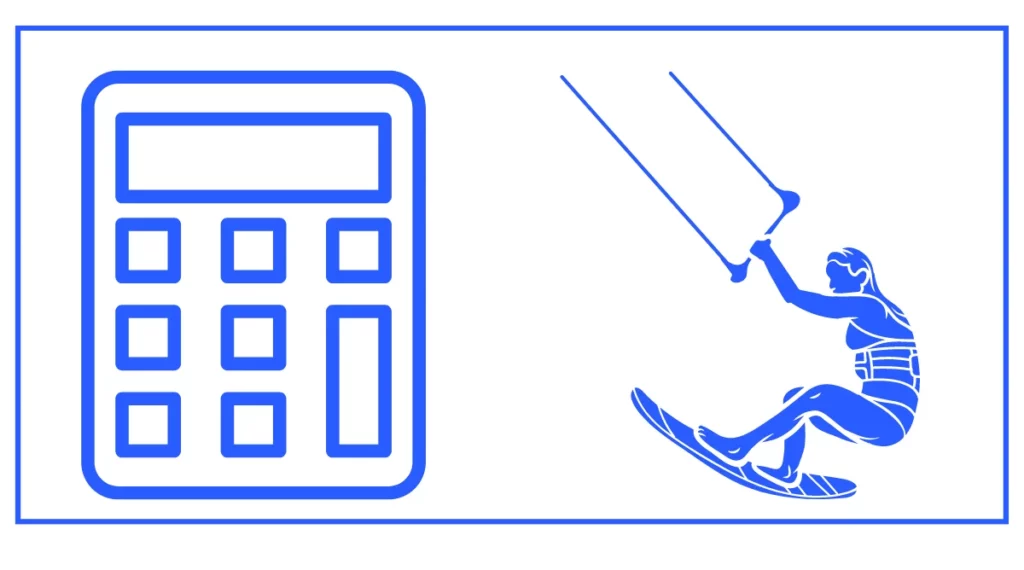
You might want to find your scuba diving weight, your fielding percentage, or your stride length.
Understanding the Importance of Kite Size in Kiteboarding
Kiteboarding is an exhilarating water sport that combines elements of surfing, wakeboarding, and paragliding. The key to a successful and safe kiteboarding experience lies in choosing the right kite size. A kite that's too large or too small can significantly impact your performance and safety on the water.
The ideal kite size depends on several factors, including:
- Rider weight
- Wind speed
- Skill level
- Riding style
- Board type
Our Kite Size Calculator takes these factors into account to provide you with a personalized recommendation for your kiteboarding setup.
How to Use the Kite Size Calculator?
Using our Kite Size Calculator is simple and straightforward. Follow these steps to find the right kite size for your kiteboarding needs:
- Enter your weight in pounds.
- Select your kite type (Regular or Trainer).
- Input the wind speed in knots.
- Click the "Calculate" button.
The calculator will then provide you with a recommended kite size based on your input. It's that easy!
Understanding the Calculator Results
After clicking the "Calculate" button, you'll receive a recommendation that includes:
- Recommended kite size in square meters
- Suggested board length and width in inches
This information is crucial for selecting the right kiteboarding equipment for your specific needs and conditions.
Factors Affecting Kite Size Selection
Rider Weight
Your body weight plays a significant role in determining the appropriate kite size. Generally, heavier riders require larger kites to generate enough lift and power. Our calculator takes your weight into account when making recommendations.
Wind Speed
Wind conditions are crucial in kiteboarding. The wind speed affects the amount of power your kite generates. In lighter winds, you'll need a larger kite to maintain performance, while stronger winds call for smaller kites to prevent overpowering.
Skill Level
Beginners often benefit from slightly larger kites, as they provide more stability and are easier to control. As you progress and improve your skills, you may opt for smaller kites that offer more maneuverability and responsiveness.
Riding Style
Different riding styles require different kite sizes. For example:
- Freeride: A versatile kite size suitable for various conditions
- Big Air: Slightly larger kites for generating more lift
- Wave Riding: Smaller kites for better control in waves
- Freestyle: Medium-sized kites for tricks and maneuvers
Board Type
The type of board you use also influences kite size selection. Twintip boards, surfboards, and hydrofoils each have different characteristics that affect your kite size needs.
Kiteboarding for Beginners: Getting Started with the Right Kite
If you're new to kiteboarding, choosing the right kite size is crucial for your learning experience. Here are some tips for beginners:
- Start with a trainer kite: These smaller kites help you learn kite control without the added complexity of being on the water.
- Take lessons: Professional instruction is essential for learning proper technique and safety procedures.
- Choose a larger board: Beginners benefit from larger boards that provide more stability and easier water starts.
- Opt for a slightly larger kite: This can provide more stability and easier relaunch capabilities.
- Practice in ideal conditions: Start in steady, moderate winds and flat water to build your skills.
Advanced Kiteboarding: Fine-Tuning Your Kite Size Selection
For experienced kiteboarders, fine-tuning your kite size selection can greatly enhance your performance. Consider these factors:
- Wind range: Understand the wind range of your kites and choose accordingly.
- Multiple kite sizes: Build a quiver of kites to cover various wind conditions.
- Riding style adaptation: Adjust your kite size based on your preferred riding style or the conditions you'll be facing.
- Location-specific considerations: Different kiteboarding spots may require different kite sizes due to local wind patterns and water conditions.
The Importance of a Kite Size Chart
While our Kite Size Calculator provides personalized recommendations, it's also helpful to understand kite size charts. These charts offer a general guideline for kite sizes based on rider weight and wind speed. They can be a useful reference when selecting kites or planning your kiteboarding sessions.
Kiteboarding Safety: The Role of Proper Kite Sizing
Choosing the right kite size isn't just about performance – it's also a crucial safety consideration. Using a kite that's too large for the wind conditions can be dangerous, potentially pulling you out of control or lifting you off the water unexpectedly. Conversely, a kite that's too small may not provide enough power to keep you riding safely.
Always prioritize safety in kiteboarding by:
- Checking wind conditions before riding
- Using appropriate safety gear (helmet, impact vest, etc.)
- Riding within your skill level
- Being aware of your surroundings and other water users
- Following local kiteboarding rules and regulations
Kiteboarding Equipment: Beyond Kite Size
While kite size is crucial, it's just one piece of the kiteboarding equipment puzzle. Other important factors to consider include:
- Kite type (C-kite, bow kite, hybrid, etc.)
- Bar and lines
- Harness
- Wetsuit or appropriate clothing
- Safety equipment
Ensure all your gear is properly sized and suitable for your skill level and riding conditions.
Improving Your Kiteboarding Skills
As you progress in kiteboarding, you'll develop a better understanding of how different kite sizes affect your riding. Here are some tips to improve your skills:
- Practice kite control on land
- Work on your board skills in various conditions
- Learn to read the wind and water
- Try different riding styles and techniques
- Ride with more experienced kiteboarders
- Consider advanced lessons or clinics
Kiteboarding Destinations: Planning Your Next Adventure
Once you've mastered the basics and have a good understanding of kite sizing, you might want to explore some popular kiteboarding destinations. Some renowned spots include:
- Dakhla, Morocco
- Cabarete, Dominican Republic
- Tarifa, Spain
- Maui, Hawaii
- Cape Hatteras, North Carolina
Each location offers unique wind conditions and experiences, so be sure to research and bring the appropriate kite sizes for your trip.
